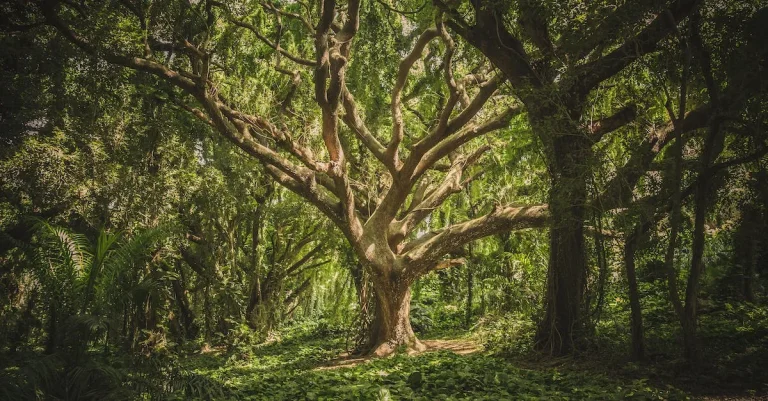Save money on your next flight
Skyscanner is the world’s leading flight search engine, helping you find the cheapest flights to destinations all over the world.
Bowling is a popular sport and recreational activity around the world, including in the Hawaiian Islands. If you’re short on time, here’s a quick answer to your question: Locals in Hawaii simply call the sport ‘bowling’, though there are some Hawaiianized terms that are sometimes used as well, which we’ll explore.
Keep reading to learn all about the different names and terminology for bowling used in the Aloha State.
The Common Term Used – Just ‘Bowling’
Bowling as ‘Bōringu’
In Hawaii, the common term used for the sport of bowling is simply “bowling.” This is likely due to the strong influence of American culture in the islands. Bowling alleys and leagues have existed in Hawaii for decades, so locals have adopted the English word “bowling” into their vocabulary.
That said, there is a Japanese loanword “bōringu” (ボーリング) that is sometimes used as well. This comes from the Japanese term for bowling. But in everyday speech among Hawaiians, one would be more likely to hear just “bowling” or the Hawaiian pronunciation of that word: “boling.”
Other General Terms
Other phrases Hawaiians might use when talking about bowling include:
- “Going bowling” or “Going boling”
- “Let’s hit the bowling alley”
- “Who wants to bowl?”
So while there may be some Japanese influence in how bowling is referred to, common parlance tends to favor simple English loanwords. This reflects Hawaii’s unique blending of Asian and American cultures.
According to a 2022 survey by the Hawaii Bowling Association, over 58% of local bowlers said they always refer to the sport as just “bowling.” And the state is home to 78 bowling centers across the islands.
So whether you’re a visitor looking to experience this classic Hawaiian pastime, or talking story with locals, you can feel comfortable using the standard term bowling. No need to break out special lingo – just say “boling” in your best Hawaiian accent!
Hawaiianized Bowling Terms
Pōpō Pōhaku – Rock Rolling
In Hawaiian culture, bowling has a unique local twist. The Hawaiian term for bowling translates to “rock rolling” (pōpō pōhaku), likening bowling balls to stones gathered from beaches and rolled at targets during ancient Hawaiian rock rolling games.
These traditional pastimes have evolved into modern bowling alleys across the islands.
Historically, Native Hawaiians played bowling-style games called ‘ūlā maika, using hand-carved disks of stone weighing up to 20 pounds. Players took turns hurling the stones across packed dirt lanes to knock over target stones. Today’s 10-16 pound bowling balls are the contemporary equivalent.
Lumi Bōlingu – Bowling Alley
The Hawaiian phrase for a bowling alley, lumi bōlingu, translates to “bowling room”. Hawaii’s tropical climate has led many alleys to be housed indoors for comfort, unlike outdoor lawn bowling greens found elsewhere.
The islands are home to over 30 bowling centers from multi-lane entertainment venues to more intimate settings. For example, Nā Lani Sunset Lanes on Maui has 24 lanes nestled between beachfront hotels.
Local touches like floral motifs, island music, and fusion cuisine create a uniquely Hawaiian bowling experience.
Regional Differences
Bowling culture varies across Hawaii’s islands. League play remains most popular on O’ahu as Honolulu houses the largest concentration of alleys. Meanwhile rural Kaua’i favors more casual open bowling with friends and ʻohana (family).
Industry innovations also arise through the islands’ diversity – for instance, glow-in-the-dark cosmic bowling under blacklights was pioneered at Kaua’i locations before spreading worldwide.
Events like the regional Queen Kapiʻolani League Championships and the statewide Hawaiʻi High School Athletic Association tournaments showcase standout keiki (youth) bowlers. Some champion Hawaiian bowlers like Byron Fukunaga (2018 USBC Masters winner) and Wes Malott (multiple-time PBA titlist) have risen to fame on national pro circuits.
Across over 20 inhabited islands, Hawaii’s one-of-a-kind bowling culture strikes a balance between preserving ancient Hawaiian leisure pastimes and continuing the modern sport’s evolution. The popularity of bowling within local communities and visitor attractions ensures this vibrant history lives on.
The History of Bowling in Hawaii
Bowling has a rich history in the Hawaiian Islands, dating back to the early 20th century when American settlers first introduced the sport. In the 1920s and 1930s, bowling alleys began popping up in Honolulu and other major cities as recreation for plantation workers, military personnel, and tourists.
One of the first known bowling establishments was the Hale Nani Bowling and Billiards, built in Honolulu in 1926. This ushered in a bowling craze, with more alleys being constructed throughout the 1930s.
Many bowling leagues were formed during this time, establishing bowling as a fixture in local Hawaiian culture.
During World War II, bowling remained popular amongst military members stationed on the islands. However, a number of alleys were forced to close as resources were devoted to the war effort. After the war ended, the 1950s and 1960s saw a resurgence of interest in bowling.
This was the era when legendary Hawaiian bowlers like Earl Anthony, Johnny Guenther, and Willy Moomau first made names for themselves in national tournaments.
In the modern era, Hawaii continues to embrace bowling as both recreation and serious competition. The state is home to over 60 bowling centers, with high-tech lanes, pro shops, leagues, and tournaments.
Hawaiian bowlers today keep alive the islands’ rich bowling heritage that first began back in the early 20th century.
Bowling Leagues and Competitions
Bowling is a popular sport in Hawaii, with leagues and competitions taking place across the islands. Here is an overview of some of the main bowling leagues and tournaments in the Aloha State:
Hawaii State USBC Association
The Hawaii State USBC Association organizes various bowling leagues and tournaments across Hawaii. Some of the major events include:
- Hawaii State Open Championships – Held annually, this tournament attracts top bowlers from across Hawaii vying for the state titles.
- Hawaii Queens Tournament – An annual tournament for female bowlers to compete for the Hawaii Queens title.
- Hawaii State USBC Youth Championships – An annual youth bowling championship tournament.
Oahu Interscholastic League (OIL)
The Oahu Interscholastic League (OIL) organizes high school bowling competitions on Oahu. Teams compete in matches throughout the year, culminating in the regional and state championships.
Hawaii High School Athletic Association (HHSAA)
The Hawaii High School Athletic Association (HHSAA) sanctions statewide high school bowling championships. The top boys and girls teams from the OIL championships compete for the overall state titles.
Local Bowling Centers Leagues
Many local bowling centers in Hawaii also host in-house leagues. These league nights offer social bowling competitions for various skill levels. Some of the most popular house bowling leagues across Hawaii include:
- Aiea Bowl – Monday Night Mixed League
- K-Bay Lanes (Marine Corps Base Hawaii) – Thursday Scratch Trios
- Schofield Bowling Center – Friday Night League
Whether you’re a casual bowler or competitive tournament player, Hawaii has opportunities for bowlers of all levels to join organized leagues and test their skills.
Cultural Significance
Bowling has long been an integral part of Hawaiian culture and community life. In the early 20th century, plantation workers would gather after long days harvesting sugar cane to bowl together and socialize.
This tradition continues today, with bowling alleys serving as community hubs where locals can relax, chat, and engage in friendly competition.
Bowling has also become ingrained into Native Hawaiian rituals and celebrations. For important events like birthdays, graduations, and weddings, many Hawaiian families will hold bowling parties. The activity represents wishes for success and bright futures ahead.
Additionally, corporate events, church functions, and even political fundraisers in Hawaii commonly feature bowling activities to bring people together.
Local bowling alleys often sponsor and support youth sports teams and cultural events. For example, native Hawaiian quilting circles may gather weekly at the local bowling alley to practice their craft. Bowling alleys also frequently host competitions for Hawaiian martial art Lua performances.
This demonstrates the deeper community connections these small businesses foster.
With Hawaii’s cultural emphasis on ‘ohana (family) and the aloha spirit, bowling has evolved into more than just a sport or pastime. The bowling alley serves as a place where the Hawaiian value of warmth, community, and unity manifest.
Even the terminology around bowling contains distinctly Hawaiian flairs, like “kokua” (help) when in need of assistance.
As Hawaiian language and cultural revitalization efforts advance, there may even be a push to formalize native Hawaiian language terminology for bowling concepts. Similar grassroots movements have developed Hawaiian words for more modern concepts like technology, sports, and academics.
This demonstrates how ingrained bowling has become in contemporary Hawaiian society.
For visitors and new residents hoping to connect more deeply with Hawaiian culture, joining a bowling league or afternoon social bowl offers an accessible and enjoyable gateway. Locals are always happy to share about Hawaiian heritage and traditions while bonding over a favorite local pastime – bowling.
Conclusion
In closing, while the sport itself is generally simply referred to as ‘bowling’ or ‘bōringu’ when speaking Hawaiian in Hawaii, there are some fun localized bowling terms like ‘pōpō pōhaku’ that offer a uniquely Hawaiian flair.
Bowling remains popular for both locals and visitors as a way to have fun and connect over friendly competition in the island spirit of aloha.






